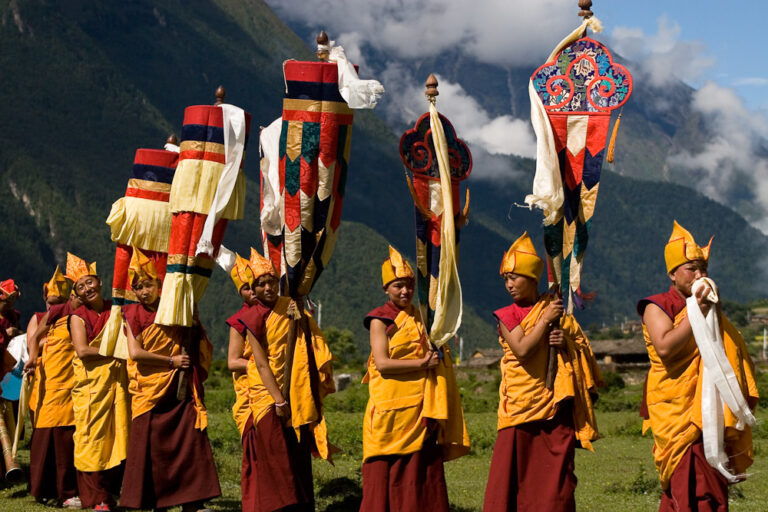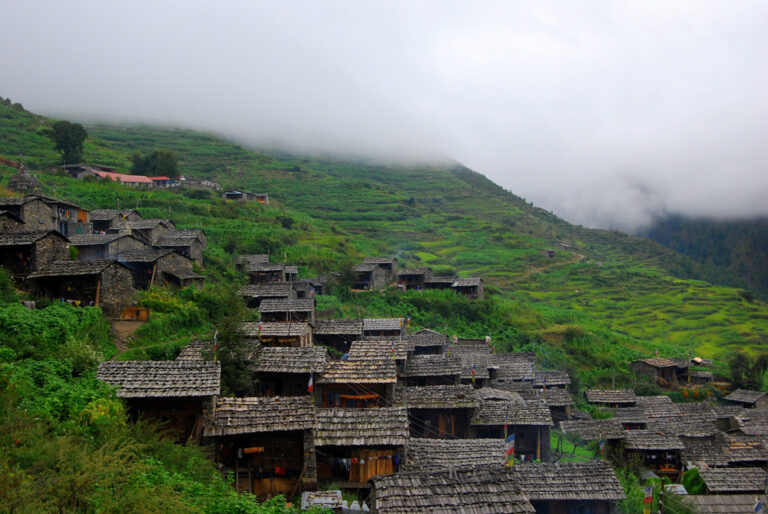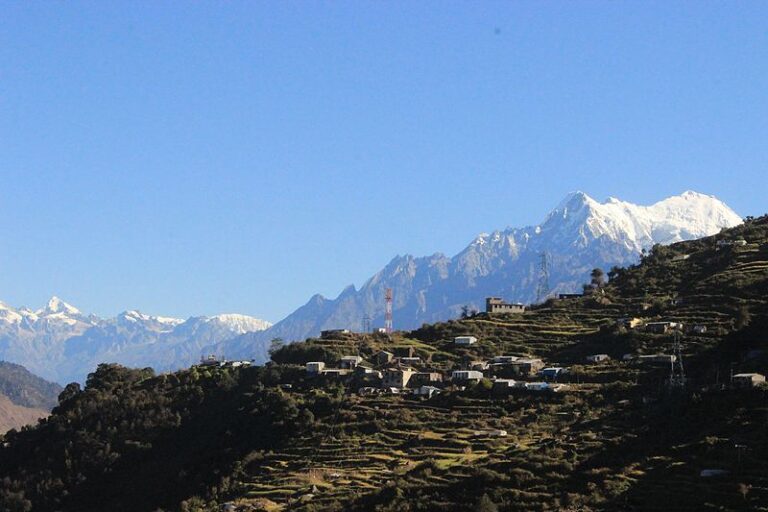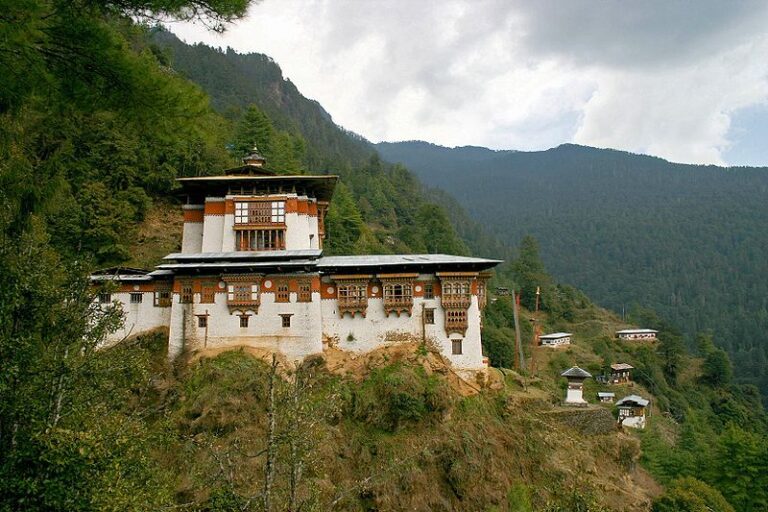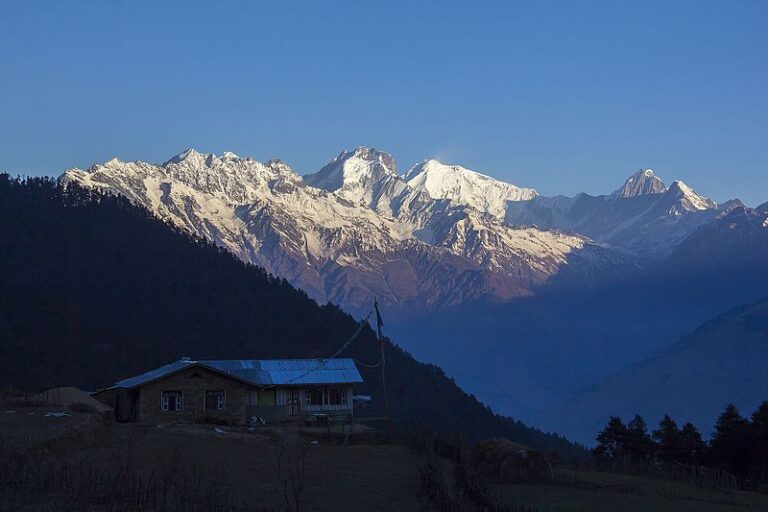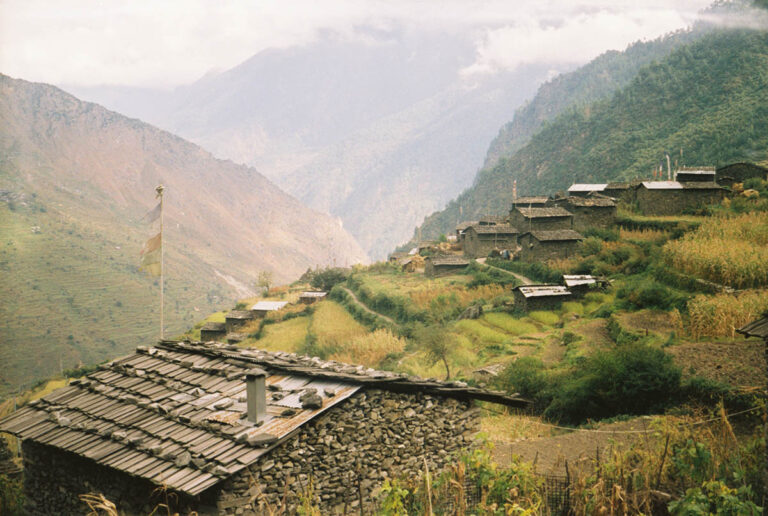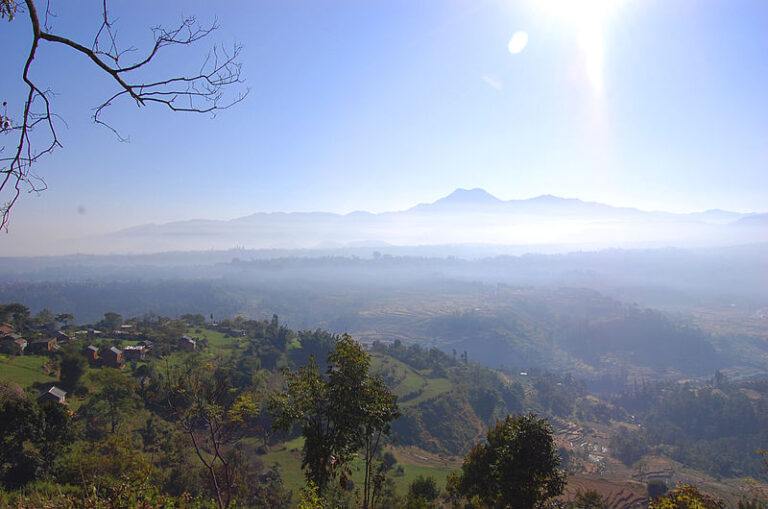Day 01 –Drive to Shyabrubesi (1500m.a.s.l) – 07 hours drive – Shyabrubesi is 120 kilometers far from Kathmandu city and it is one of the entrance gates for the Langtang national park so we have to drive either public bus or private jeep to get Shyabrubesi. The road is an adventurous due to gravel and dusty road but still we do not feel that much board due to see beautiful valley, verdant paddy fields, green forest and splendid view of Langtang Lirung, Ganesh Himal and charm landscapes. Shyabrubesi has dozens of good guesthouses and offers comfortable bedrooms and delicious meals.
Day 02 –Trek to Gatlang village (2240m.a.s.l) -05 hours walks – to ignore the huge looping switchbacks of the road, we will take shortcut but really steep trail to get Bahun Danda pass which is 2180 meters high and offers to see beautiful view of Goljung village, charms landscapes and massif view of Langtang Lirung to the northeast rim of the Shyabrubesi. From here, we will head to northern valley following by the dirt road and after three hours walk, bring us to lovely traditional village of Gatlang. Gatlang is a largest Tamang settlement of the area and available dozens of private lodge, home stays and community lodge.
Day 03 – Exploration of Gatlang village and detour to Parbati Kund -There are hundreds of interesting things and places around the Gatlang village such as Monasteries, Stupa and wood carving center and Parbati kunda, which is a sacred and beautiful lake, located just top of the Gatlang village. Detour to Parbati kunda offers to see massif view of Ganesh Himal, Langtang mountain ranges and awesome landscapes.
Day 04-Trek to Tatopani (2600m.a.s.l) -06 hours walks –begin of the trek, we will walk down an approximately one hour to get Chilime village pass by the delightful line of stone Chhortens which are built just center of the trekking trail. After Chilime, we will walk on the flat trail for one hour and have to cross Chilime River on a suspension bridge. From here, we will climb steep trail for two hours to get Tatopani village pass by the Cherka and Gongang village. Tatopani village has half dozens of lodges and offers to see beautiful landscapes, waterfalls, green forest and Chilime River valley to the southwards. There was a beautiful hot spring just middle of the Tatopani village but unfortunately; the Earthquake destroys the pool in 2015.
Day 05-Trek to Nagthali Ghyang (3165m.a.s.l) -03 hours walks – From Tatopani village, we will walk through the dense forest of Pine, oaks and Rhododendron to get Nagthali Ghyang which is a beautiful plateau located just top of the hill and surrounded by the forest of Rhododendron trees. Nagthali Ghyang offers to see splendid view of Ganesh Himal, Langtang Lirung and Paldor peak. There are half dozens of guesthouses are available at Nagthali Ghyang and provides comfortable bedrooms and delicious meals with such a great hospitality.
Day 06-Sight trip to Tharuche viewpoint and trek down to Thuman village –Tharuche viewpoint is located northern part of Nagthali Ghyang an elevation with 3809 meters. The Tharuche viewpoint offers to see beautiful view of Ganesh Himal, Langtang Lirung, Paldor peak and numerous mountains of the Tibet. After returned back from Tharuche viewpoint, we will descend steeply for 820m through forest to the pleasant Tamang village of Thuman. Thuman village has half dozens of home stays and two guesthouses and is a fine place to spend an afternoon exploring.
Day 07-Trek to Timure (1762m.a.s.l) -06 hours walks –we will walk on a narrow path that lead us northeast direction, through traversing, a rocky hillside then descend 650 meters via Dhalphedi to get Bhotekoshi river. The trail is narrow and steeply downhill to arrive Bhotekoshi river but still excellent to see charm landscapes and villages which are settled over the vertical land. From here, we will walk approximately 50 minutes to get Timure where we can get comfortable bedrooms and delicious meal with warm hospitality of Tamang people.
Day 08-Sight trip to Rasuwagadhi and trek back to Bridhim village (2229m.a.s.l) -06 hours walks- sight trip to Rasuwagadhi takes about 45 minutes; which is also known as the border for Nepal and Tibet. After returned back from Rasuwagadhi, we will follow the road downstream for an hour then appear a trail junction. From here, we will take left hand side to get Lingling village where we have our lunch of the day with beautiful view of terraced field and excellent landscape. The trek from Lingling to Bridhim takes approximately two hours due to ascend 400 meters. Bridhim is a scenic Tamang village, has a more than 25 home stays, dozens of guesthouses and a beautiful monastery at the top of the village.
Day 09-Trek to Shyabrubesi via Khanjing village – Begin of the trek, we will walk on the flat trail an approximately two hours to get Khanjing village which a small but very beautiful Tibetan people’s settlement of the Langtang national park and offers to explore 500 years old monastery. After exploration of Khanjing village and Monastery, we will trek down through the pine forest to get Shyabrubesi with the view of charm landscapes and Bhotekoshi river valley.
Day 10 – Drive back to Kathmandu- 07 hours –There is not any alternative trail to get back from Shyabrubesi so we have to drive back to Kathmandu city via same road. The public bus leaves early in the morning and takes about 7 hours with the view of Ganesh Himal, Langtang Lirung, charm landscapes and agricultural terraced field.
Day 11 – Final departure – After successful trip of Tamang heritage trek you will fly back to your home with great experience of Nepal and many tales about mountains, jungles, colorful Tamang peoples and their culture, tradition, costumes and hospitalities that makes you a storyteller among your friends and colleagues.
